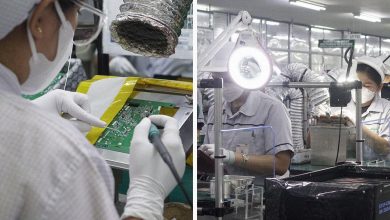I’ve been an active participant of the Manila International Book Fair ever since its inception. By participant, I mean buying books in bulk to try and save money for the rest of the year. I was so engrossed in the huge discounts that I didn’t even stop to think if I could finish reading them all.
Book fairs are great because you can buy great titles in bargain prices. But it’s hard not to realize that the selection in such fairs are rather limited, especially if you’re looking for lesser known titles, less so for self-published books.
Apparently, two women already teamed up to address this shortcoming.
Bridging readers and independent authors
Czyka Tumaliuan and Kayla Dionisio started Komura; as a response to these big book fairs. They became aware of the lack of platform for small-time publishers and authors, and wanted to provide a space for these people to share their works.

Pulled from Haruki Murakami’s Kafka on the Shore, Komura; is inspired by the Komura Memorial Library in the book — where a character lives in after he runs away from home.
The semicolon isn’t simply there for aesthetic purposes. Czyka and Kayla explained that the semicolon, a mark that connects independent clauses, signifies Komura;’s goal of providing a space for those in the literary community that can’t take part in these book fairs. Instead of independent clauses, Komura; is connecting these independent authors to each other.
“Komura; started out as a book fair,” Kayla shared with us. “And the book fair wasn’t mainly just books. It was a mirage of other things.”
Independently-made board games, stickers, video games, music, zines — all of these converge at Komura;’s book fairs because while they are different in form, storytelling is still at their core.
“So ganoon yung lalim — connections that we don’t see in the context of a big fair na ang init, traffic sa linya ng cashier,” Czyka said. “So in this space, it’s really warm and you can drink beer. You can be a human being.”
While Komura; book fairs in the past welcomed different kinds of storytelling, Kayla and Czyka have decided to focus on black and white zines for their upcoming event.
When I asked why they decided to hold a zine fair only now, Czyka answers: “September 21 is the commemoration of Martial Law and I guess, we wanna emphasize how zines are an alternative source of information.”
A first for them, the Komura; Black & White Zine Fair will spotlight the Mosquito Press—the alternative press during Martial Law—on September 21. This term was used on publications that continued to criticize the Marcoses and the government even though doing so at that time could cost journalists their life. For the zine fair, Komura; is not only inviting artists to gather round to share their zines at Warehouse Eight, because Komura; is also inviting people from the Mosquito Press to talk about their experiences during the said period in Philippine history.
Printed in black and white
Zines—pronounced as “zeenz”—conjure pictures with minimal text inside my head. I have associated the word with graphic artists because majority of the zines I have encountered are heavy on illustrations.
Perhaps my understanding of zines is simply a misinformation, but it is not rooted in nothing. Czyka told me about a writer in one of their book fairs who had to put up a sign to explain herself. The sign went something like: “Please buy my books and support them even if it doesn’t have drawings.”
“Parang nawawala yung love for words, and narrative, and proper storytelling,” Czyka explains. “And I think for this Komura;, we wanted to focus on that. Like sulat tayo, guys, gawa tayo ng poetry…”
Kayla continues Czyka’s thought, “When you say black and white, you’re given that extra challenge kasi may constraint ka. For those who are good at art, how do you translate it to black and white. Kasi [zines are] simple xerox. Kasi that’s how it started.”
When I expressed to them my preconceived notion of zines and how I didn’t even bother thinking about applying for the Komura; Creators Grant because I lacked the skill in visual arts, Czyka jokingly told me to join.
“We’re funding anyone like me,” Kayla said. “The creators grant is not new. It started last year because the people from the community—the authors, the artists— when I ask them kamusta na yung project mo, they tell me, wala akong pang print eh… so we decided magpa-grant tayo.”
I still have to shake myself from what I originally thought zines were, but Czyka’s explanation when I asked her to describe the word is comforting to think of: “I think spaces like Komura allows everyone to discover what it is. For me it’s about discovery. It’s not strictly like oh, ito lang yung zine. Siguro pag mga technical stuff, walang ISBN and actually, yun lang.”
The Komura; Black & White Zine Fair will be happening on September 21, from 11AM to 9PM at Warehouse Eight in La Fuerza. It will be a space for writers and artists to converge and share their works, as well as a place for people like me to discover how limitless zines can be.










